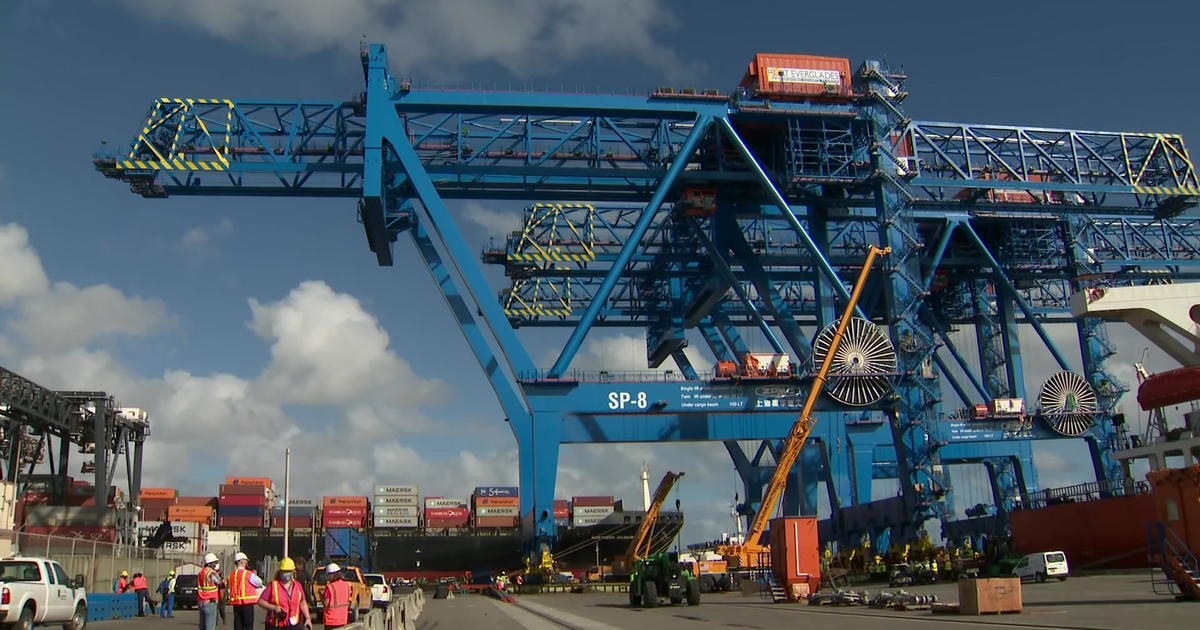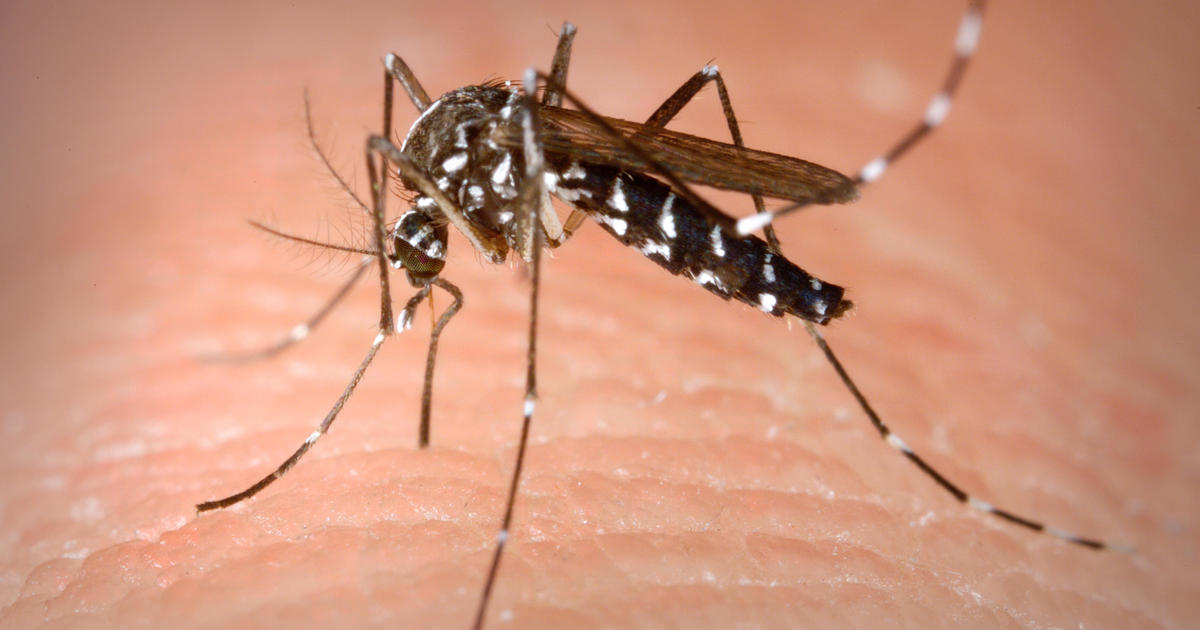I-Team: Close Calls On The Rise
An alarming number of airplanes are getting too close and some federal officials want to know why. The CBS4 I-Team first warned you about close calls in our skies back in 2007. After the I-Team's first report aired the problem appeared to improve as safety officials moved to address the issue and make improvements to the nation's aviation safety system.
But now, as I-Team investigator Stephen Stock discovered, a growing number of close calls recently has gotten federal officials' attention. Experts worry that unless something is done to reduce these mid-air close calls disaster could result.
The two planes came so close that a 747 would not have fit between them. It all happened this past February, 2010, as one commercial jet descended through 5,000 feet while on approach to land at Dallas Forth Worth International Airport.
Almost without warning the jet nearly collided with another jet that was taking off.
Only a last second evasive action by the crew landing prevented a mid-air collision. The plane taking off passed less than 200 feet underneath the plane that was landing.
"Two hundred feet is enough to see the pilot's face in the window and it's very scary," said retired pilot Jay Rollins of Hollywood, Florida.
Rollins serves as an aviation safety consultant and runs his own aviation blog.
Rollins retired after 25 years as a pilot at American Airlines and 6 years in the Navy.
"I mean we're talking about not a car moving at 20 miles an hour," said Rollins. "We're talking about jets that are passing each other at hundreds of miles an hour. And to get that close (200 feet) is frightening indeed."
Then there's the near collision at Melbourne's airport in March, 2010. A crew of a commercial air carrier on final approach cleared to land reports coming within 500 feet of a helicopter out of Patrick Air Force base that commercial pilots said suddenly "came into view".
"To the extent that you're 500 miles an hour in this jet 500 miles an hour in the other one that closure can be fast indeed and the distance between them has to be profound," said Rollins. That's what safety officials call separation. And there are strict rules to keep aircraft to maintain separation in the air.
But in a growing number of cases, those separation rules (safety distances) are being violated; something called Airborne Conflicts and Near Mid-Air Collisions or NMAC's by NASA.
According to NASA there were 134 Airborne Conflicts and 33 NMAC nationwide which happened just in the first three months of this year alone. Many of them, including the two close calls just described earlier in this story, were the result of air traffic controller inattention or heavy workload.
The anonymous complaints filed by pilots to NASA are called the Aviation Safety Reporting System (ASRS). After peaking in the early 2000's then dropping dramatically the number of NMAC's reported to the ASRS has been climbing since 2006.
In 2006 there were 152 reports. In 2007,166. In 2008 there were 185. In 2009, 157. In 2010 there have already been 33 NMAC's reported in the first three months of the year.
The same trend holds true with airborne conflicts.
The rise is even more dramatic in FAA "official accident and incidents." After holding steady at around 20 or 30 incidents a year for a decade there was a jump to 175 incidents in 2009 after only 21 incidents in 2008.
And there has been an increase in errors by air traffic controllers as well.
In Miami, according to a source within the federal aviation community who asked not to be named, operational errors by air traffic controllers are also rising.
In 2008 there were 13 operational errors by air traffic controllers.
In 2009 there were 14 operational errors.
In the first six months of 2010 there have been 16 operational errors at MIA.
"Particularly in the last year it looks like its spiking," said Aviation Expert Rollins. "And I don't think it's completely clear why."
This is what's going on in my industry," said one local air traffic controller who asked to remain anonymous. The air traffic controller asked the I-Team to remain anonymous for fear he'd lose his job for speaking out.
"In my experience (working in the tower) it's been feet (between airplanes that have nearly collided," said the air traffic controller.
I-Team investigator Stephen Stock asked to be sure, "Feet?"
"Feet," answered the air traffic controller.
Feet between aircraft where the pilots actually acknowledge a problem later on the radio.
"They've come out and said "That was close." And uh... it shakes you up," said the anonymous air traffic controller.
The FAA confirms that operational errors by air traffic controllers nationwide rose from 2.44 for every million flights in 2009 to 3.28 per million flights through June 30, 2010. That's a 34.4% increase.
"As far as I'm concerned this whole thing is the Titanic. We've already hit the iceberg. It's sinking," said the air traffic controller. "It's my fear that they're not going to recognize it's sinking until two big airplanes make contact and I think it's inevitable."
The rise in close calls coincides with an increase in the number of new air traffic controllers who are beginning to replace a work-force fast approaching retirement age.
These incidents also come as the FAA attempts to bring on-line new technology that will track airplanes through satellites and computers rather than just through radar.
"It is absolutely critical that this (issue of increasing close calls) is addressed," said safety consultant Rollins.
The FAA says neither trainees nor new technology are contributing to this rise in close calls.
But when the I-Team tried to talk about this problem on camera with both FAA officials and leaders of the air traffic controllers union both refused.
One source told the I-Team that both sides quote "wanted the issue to go away."
"It's only a matter of time (before something happens)," said the anonymous air traffic controller, a veteran of several decades directing airplanes from the tower.
A matter of time, he says, before these so-called near misses turn into actual collisions. He's so worried about it he won't fly with his family.
"I'm not going to put my family through it," the controller said. "And quite frankly, I'm worried about your family even more than I ever was because of what's going on."
"We're asking for trouble if these statistics continue going in the direction that they're going we're going to see something terrible," said Jay Rollins.
While declining to go on camera to answer questions, an FAA spokeswoman did send us a statement saying quote "The FAA is concerned..."
But the agency blames this rise in close calls on a new anonymous reporting system which quote "are resulting in more reporting which will help spot problems before an accident occurs."
The FAA is convening a special summit of employees and safety experts on August 17, 2010, in Washington D.C. where they will discuss this issue and ways to stop the growing number of close calls.
This will be the third time in less than four years the FAA has hosted a meeting like this to address urgent aviation safety problems.
You can read the FAA's entire statement by clicking here.
To view a database of some of the reports of Near-Misses in our skies click on the links below, all databases are in Microsoft Excel format.
Database 1: Details Of Mid-Air Close Calls
Database 2: Near Mid-Air Collisions From 2001 - 2010
Database 3: Near Mid-Air Collision Airborne Conflicts
Database 4: Full Details Of Near Mid-Air Collisions 2001-2010



